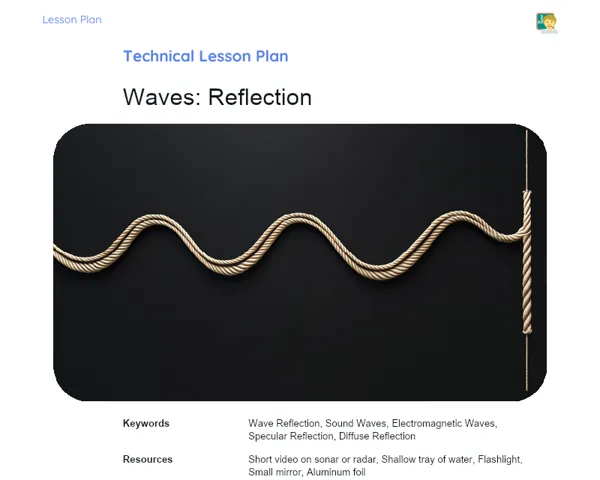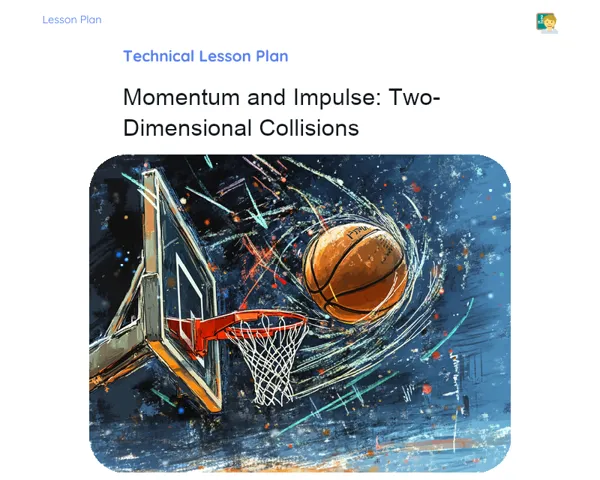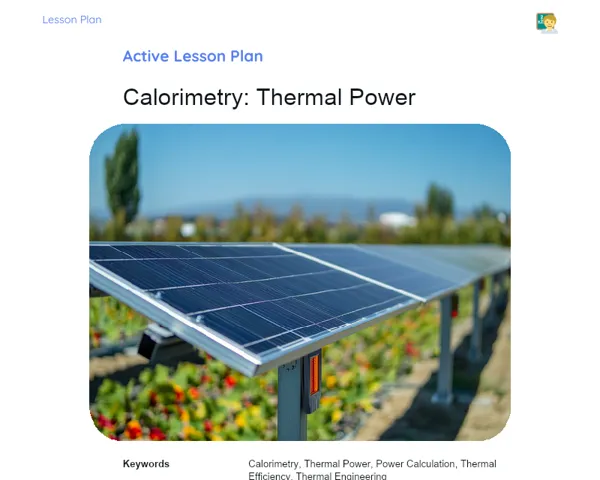Lesson Plan | Active Methodology | Simple Harmonic Motion: Relationship between SHM and UCM
| Keywords | Simple Harmonic Motion, Uniform Circular Motion, Practical applications, Frequency and amplitude, Pendulum, Hard drive, Resonance circuit, Interactive activities, Theory-practice connection, Group discussion, Learning consolidation |
| Necessary Materials | Hard drive models (cardboard, needles), Control systems (strings, weights), Construction materials for pendulums (nylon strings, weights, lightweight supports), Electrical circuit assembly kits (oscillators, oscilloscopes), Paper and pen for recording observations, Adequate space for assembly and conducting experiments |
Premises: This Active Lesson Plan assumes: a 100-minute class duration, prior student study both with the Book and the beginning of Project development, and that only one activity (among the three suggested) will be chosen to be carried out during the class, as each activity is designed to take up a large part of the available time.
Objective
Duration: (5 - 7 minutes)
Setting clear objectives is key to guiding both students and teachers towards expected learning outcomes. By establishing what's to be achieved in terms of both understanding and practical skills, students can appreciate the significance of studying Simple Harmonic Motion and its link to Uniform Circular Motion. This clarity optimizes class time, ensuring every activity aligns with the learning goals.
Objective Utama:
1. Enable students to connect simple harmonic motion (SHM) with uniform circular motion (UCM), recognizing their similarities and differences.
2. Enhance calculation and practical skills by measuring speeds and deformations in SHM and UCM systems.
Objective Tambahan:
- Ignite students' enthusiasm for physics by exploring practical and relatable applications of SHM and UCM concepts.
Introduction
Duration: (15 - 20 minutes)
The Introduction stage aims to engage students with real-world problem situations that incorporate concepts of Simple Harmonic Motion and Uniform Circular Motion, encouraging practical application of their knowledge. Additionally, the contextualization seeks to bridge theoretical content with real-life scenarios, elevating interest and awareness of the significance of the subjects discussed. This approach gears students up for the subsequent practical activities and classroom dialogues.
Problem-Based Situation
1. Think about a simple pendulum on a roller coaster, where the cart follows a circular path. How can we use the concept of Simple Harmonic Motion to explain the pendulum's motion in this scenario?
2. Envision a computer hard drive that uses an actuator to position the read/write head over various circular tracks. How can understanding Uniform Circular Motion help us analyze the vibrations that may occur, and the role of Simple Harmonic Motion in this context?
Contextualization
The exploration of Simple Harmonic Motion (SHM) and its relationship with Uniform Circular Motion (UCM) is vital not just in theoretical physics, but also in day-to-day applications. For instance, the operation of clocks, metros, motors, and even information technologies like hard drives, heavily rely on these principles. Moreover, grasping these concepts aids in understanding natural phenomena, like the movement of planets and galaxies. This context helps students visualize the importance and commonality of these phenomena in real life.
Development
Duration: (70 - 75 minutes)
The Development stage is crafted to enable students to apply the principles of Simple Harmonic Motion (SHM) and Uniform Circular Motion (UCM) in practical and tangible ways. Through engaging and interactive activities, students will explore these concepts in scenarios that mirror real-life situations, enhancing learning while promoting creativity and teamwork. This phase is designed to solidify the theoretical knowledge acquired at home and prepare students for in-depth discussions and critical evaluations in class.
Activity Suggestions
It is recommended that only one of the suggested activities be carried out
Activity 1 - The Hard Drive Dancer
> Duration: (60 - 70 minutes)
- Objective: Understand and simulate how the read/write head of a hard drive operates, relating it to the concepts of SHM and UCM.
- Description: In this activity, students will simulate the functioning of a computer hard drive, where the read/write head moves along circular tracks. The aim is for students, working in groups, to use a simple disk model (made from cardboard and a needle) along with a control system (strings and weights) to guide the needle along a circular path while observing and regulating the frequency and amplitude of the motion.
- Instructions:
-
Divide the class into groups of up to 5 students.
-
Provide necessary materials for assembling the hard drive model and control system.
-
Assist students in constructing the disk model, placing the 'needle', and connecting the control system.
-
Instruct them to adjust the system to simulate varying frequencies and amplitudes.
-
Have students record their observations and measure the parameters of movement (frequency, amplitude).
-
Each group should present what they found and discuss their connections to SHM and UCM.
Activity 2 - Pendulum on the Roller Coaster
> Duration: (60 - 70 minutes)
- Objective: Investigate the properties of simple harmonic motion within the context of roller coasters, reinforcing the link with uniform circular motion.
- Description: Students will design and create a small pendulum model to simulate motion on a roller coaster. By using lightweight materials like nylon strings and small weights, they will adjust the model to replicate simple harmonic motion. This hands-on activity enables students to directly observe and manipulate the attributes of SHM and its connection to UCM.
- Instructions:
-
Organize students into groups and provide them with construction materials (strings, weights, lightweight supports).
-
Guide students to design and assemble the pendulum model, ensuring it can be adjusted for various amplitudes and frequencies.
-
Instruct groups to experiment with the pendulum, altering conditions and recording data for each setup.
-
Ask each group to analyze their collected data and present how SHM can be observed in their experiment.
-
Facilitate a class discussion to compare different observations and address applications of SHM and UCM in the context of pendulums and roller coasters.
Activity 3 - Resonance Circuit
> Duration: (60 - 70 minutes)
- Objective: Visualize simple harmonic motion within an electronic system and comprehend its real-world applications.
- Description: In this activity, students will build a basic electrical circuit that includes an oscillator and resonance detection system. They will utilize an oscilloscope to visualize resonance frequency and manually adjust the frequency to observe effects related to simple harmonic motion. This task will help them connect SHM concepts with practical applications in electronics and engineering.
- Instructions:
-
Split the class into groups and allocate circuit assembly kits, including oscillators and oscilloscopes.
-
Guide students to construct the circuit, clarifying the basic functioning of each component.
-
Instruct groups to adjust the oscillator frequency to find the system's resonance and observe the resulting harmonic motion.
-
Request each group to document their findings and present to the class.
-
Hold a discussion on how SHM concepts apply in engineering and modern technology.
Feedback
Duration: (10 - 15 minutes)
This stage aims to consolidate students' practical learning, allowing them to share their experiences and learn from each other. The group discussion reinforces understanding of SHM and UCM concepts and develops communication and reasoning skills. This moment also serves to clear up any remaining doubts and allows the teacher to gauge the effectiveness of the conducted activities, ensuring learning objectives were met.
Group Discussion
After completing the practical activities, gather all students in a large circle for a group discussion. Begin the session with a brief introduction, underscoring the importance of sharing discoveries and insights. Explain that each group will briefly present their findings and discuss the links between Simple Harmonic Motion (SHM) and Uniform Circular Motion (UCM) encountered in their experiments. Encourage students to share their viewpoints and listen carefully to one another, fostering a respectful and collaborative atmosphere.
Key Questions
1. What were the main challenges you faced in relating SHM to UCM during your activities?
2. How do the properties of amplitude and frequency influence the behavior of the systems you simulated?
3. Can you identify practical applications of SHM and UCM from the examples discussed or from other day-to-day scenarios?
Conclusion
Duration: (5 - 10 minutes)
The purpose of the Conclusion stage is to reinforce the knowledge gained during the lesson, ensuring that students can clearly articulate what they learned and how it applies in both real and theoretical contexts. Additionally, this stage strengthens the connection between theory and practice, underscoring the relevance of studying SHM and UCM in practical applications, preparing students for potential future academic and professional explorations.
Summary
In the Conclusion stage, the teacher should recap and summarize the key points concerning Simple Harmonic Motion (SHM) and its relation to Uniform Circular Motion (UCM). It’s essential to reinforce concepts like amplitude, frequency, speed, and acceleration, highlighting how these appear in the studied systems, such as the pendulum, the hard drive, and the resonance circuit.
Theory Connection
Today's lesson was structured to effectively link theory with practice. Through hands-on activities, students had the chance to observe, manipulate, and measure the physical phenomena discussed in class, such as SHM behavior and its relation to UCM. This not only solidified their theoretical understanding but also showcased how these concepts apply in real scenarios like technological devices and mechanical systems.
Closing
Finally, it’s vital to highlight the significance of studying SHM and UCM in everyday life. These concepts have direct implications in fundamental technologies like hard drives and clocks, while also providing insights for complex natural phenomena like planetary motion. Understanding these physical principles fosters a deeper appreciation of the world around us and equips students for future studies and practical uses.



